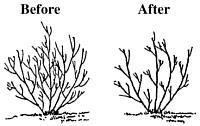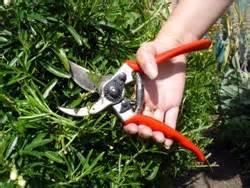Unused stories
Gardening Tips - Pruning shrubs
The right time to prune your shrubs...
Timing is everything when it comes to pruning your plants. If you prune at the wrong time of year, you may lose all of next season’s blooms. Before you whip out your pruning shears, here are some things to consider:
Deciduous Shrubs


To rejuvenate an old, overgrown shrub, one-third of the oldest, tallest branches can be removed at or slightly above ground level before new growth starts.
When the shrub to be pruned is grown for its flowers, the pruning must be timed to minimize disruption of the blooming. Spring flowering shrubs bloom on last season’s growth and should be pruned soon after they bloom. This allows for vigorous growth during the summer, to provide flower buds for the following year. Examples of shrubs that bloom on last season’s growth are forsythia, rhododendron and azalea, mock orange, early white spirea species, lilacs and weigela.
Some shrubs that bloom after June usually do so from buds which are formed the same spring. Such shrubs should be pruned in late winter to promote vigorous growth in the spring. Examples of shrubs that bloom on current season’s growth - glossy abelia, butterfly bush, Japanese beauty bush, crape myrtle and snowberry.
Evergreen Shrubs
For most evergreen shrubs, thinning is the most desirable procedure. Some evergreens can be sheared when a stiff, formal appearance is desired; however, they will still need to be thinned occasionally. Both evergreen and deciduous shrubs grown for foliage should be pruned in late winter before new growth starts. Minor corrective pruning can be done at any time.
Excerpted from the Arizona Cooperative Extension Master Gardener Manual
on-line, by N Londeree
